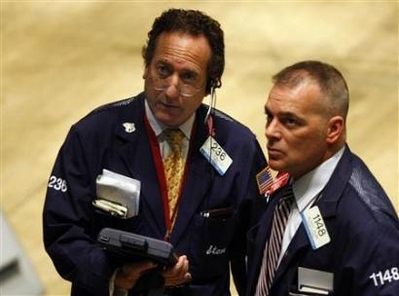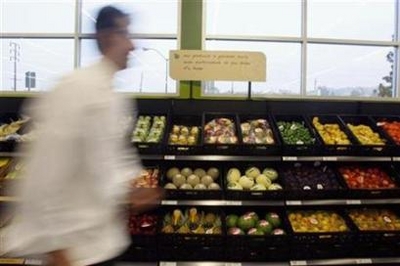US Stocks rise in early trading on tame CPI
(Agencies)
Updated: 2008-03-14 22:19
Updated: 2008-03-14 22:19
NEW YORK -- Stocks are moderately higher in early trading as investors are finding encouragement from a tame reading on inflation and word of a deal to provide a credit line to Bear Stearns Cos.
 Traders work on the floor of the New York Stock Exchange March 11, 2008. [Agencies] |
The move higher Friday follows a Labor Department report showing the Consumer Price Index remained flat for February. Wall Street has been expecting inflation would show an increase.
JPMorgan Chase & Co. and the New York Federal Reserve plan to provide secured funding to Bear Stearns for an initial period of 28 days. The move offers Bear Stearns relief from a sudden liquidity crunch and could help instill confidence in the stagnant credit markets.
The Dow Jones industrial average is up 23 at the 12,168 level.
Inflation Surprisingly Flat in February
WASHINGTON -- Cheaper energy helped keep overall consumer prices as well as vital core prices in check in February, the Labor Department said on Friday, a surprise after a period of run-ups had fanned worry about inflation.
 A man walks past packaged fruit and vegetables at a grocery store in Los Angeles November 7, 2007. [Agencies] |
The department said its Consumer Price Index, the most widely used gauge of inflation, was flat last month after rising 0.4 percent in January.
Even more significantly, core consumer prices that exclude volatile food and energy items were unchanged after climbing 0.3 percent a month earlier.
The favorable prices report led futures markets to predict Federal Reserve policy-makers will feel free to move more aggressively on interest-rate cuts to spur a flagging economy when they meet next Tuesday.
Bets were that the Fed will trim its trend-setting federal funds rate, now at 3 percent, by three-quarters of a percentage point.
Stock futures rose and the dollar's value rose against the yen but slipped further against the euro after the prices data was issued.
Analysts questioned whether the one-month report meant inflation pressures were truly easing but agreed it created breathing-room for the Fed to lower rates more aggressively to try to stimulate the economy.
"You got a decrease in energy prices, which obviously is fluky and won't last, you got a deceleration in some food items which isn't going to last and there was a deceleration in shelter," commented Michael Darda, an economist with MKM Partners LLC. "I doubt it will last."
Retail gasoline prices moderated temporarily in February but have subsequently begun shooting higher, with predictions that prices consumers pay at the pump will hit $4 a gallon by spring.
"This is a huge downside surprise," said Ken Landon, a foreign exchange strategist with JPMorgan Chase in New York. "This gives further support for the Fed to cut rate more aggressively."
The tame February price performance was sharply in contrast to Wall Street economists' forecasts that overall prices would rise 0.3 percent and core prices would be up 0.2 percent.
The last time overall consumer prices were unchanged was in August 2007.
The CPI report showed energy prices fell 0.5 percent in February, a sharp reversal from January's 0.7 percent gain and the first decline since last August. Gasoline prices fell 2 percent after a 1.2 percent rise in January.
Transportation prices were down 0.7 percent following a 0.5 percent December gain.
In the 12-month period through February, consumer prices rose 4 percent, a moderation from the 4.3 percent gain registered in January and the smallest year-over-year increase since last October, according to department officials.
|
|
|
||
|
||
|
|
|
|

